
The Pentatomoidea are a superfamily of insects in the suborder Heteroptera of the order Hemiptera. As hemipterans, they possess a common arrangement of sucking mouthparts. The roughly 7000 species under Pentatomoidea are divided into 21 families. Among these are the stink bugs and shield bugs, jewel bugs, giant shield bugs, and burrower bugs.

Asopinae are a subfamily of stink bugs. They are predatory stink bugs that are useful as biological control agents against pests, even against other Pentatomid species, which are all herbivorous.
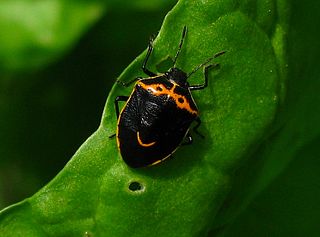
Cosmopepla conspicillaris is a species of insect in the family Pentatomidae first described by William Dallas in 1851. Due to its common preference for plants in the genus Stachys, it is often called the hedgenettle stink bug. It is also known as the conspicuous stink bug, two-spotted stink bug or happy bespectacled stink bug depending on locality. The name two-spotted stink bug is better applied to another species, Perillus bioculatus.
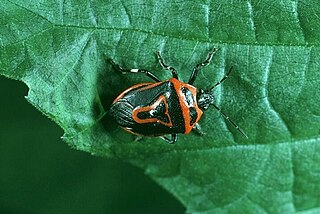
Perillus bioculatus, the two-spotted stink bug or double-eyed soldier bug, is a species of insect in the family Pentatomidae. They are native to North America but have been introduced to Eastern Europe and North India. Both the larval and adult stages are specialized predators of eggs and larvae of the Colorado potato beetle. However, the first instar larvae feed by sucking the juices out of potato stems.

Perillus is a genus of predatory stink bugs in the family Pentatomidae. There are about seven described species in Perillus.

Perillus confluens is a species of predatory stink bugs in the family Pentatomidae. It is found in Central America and North America.
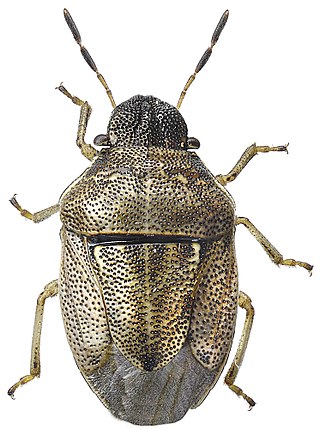
Neottiglossa is a genus of stink bugs in the family Pentatomidae. There are about 10 described species in Neottiglossa.

Perillus strigipes is a species of predatory stink bug in the family Pentatomidae. It is found in North America.
Apateticus is a genus of predatory stink bugs in the family Pentatomidae. There are about seven described species in Apateticus.
Tylospilus is a genus of predatory stink bugs in the family Pentatomidae. There are about five described species in Tylospilus.
Neottiglossa trilineata is a species of stink bug in the family Pentatomidae. It is found in North America.
Moromorpha is a genus of stink bugs in the family Pentatomidae. There is one described species in Moromorpha, M. tetra.
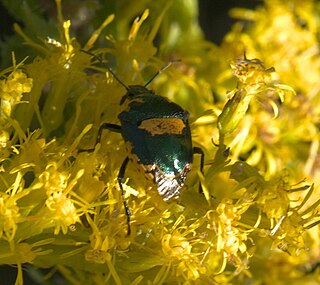
Stiretrus is a genus of predatory stink bugs in the family Pentatomidae. There are about six described species in Stiretrus.
Rhacognathus americanus is a species of predatory stink bug in the subfamily Asopinae first described by Carl Stål in 1870. It is native to North America, but may be extinct.
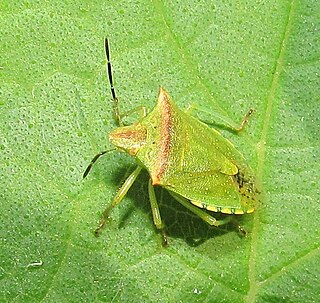
Thyanta perditor, commonly known as the neotropical red-shouldered stink bug or red-shouldered stink bug, is a species of stink bug in the family Pentatomidae. It is found in the Caribbean, Central America, North America, and South America.

Perillus exaptus is a species of predatory stink bug in the family Pentatomidae. It is found in North America.

Thyanta pallidovirens, the red-shouldered stink bug, is a species of stink bug in the family Pentatomidae. It is found in Central America and North America.
Perillus splendidus is a species of predatory stink bug in the family Pentatomidae. It is found in Central America and North America.

Oplomus is a genus of predatory stink bugs in the family Pentatomidae. There are about nine described species in Oplomus.

Proxys punctulatus, the black stink bug, is a species of stink bug in the family Pentatomidae. It is found in the Caribbean Sea, Central America, and North America.














